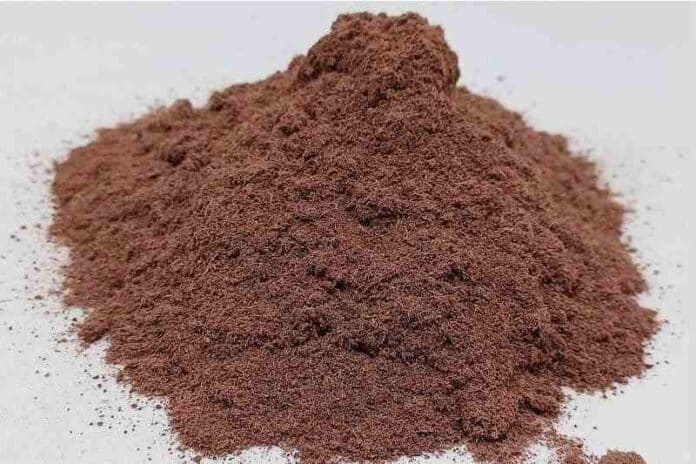
Mimosa hostilis, also known as Mimosa tenuiflora or Jurema preta, is a perennial shrub indigenous to South America, particularly Brazil and Mexico. The root bark of this resilient tree is finely ground into a powder, commonly referred to as Mimosa hostilis root bark powder (MHRB), and historically revered for its array of medicinal properties.
This article aims to illuminate the therapeutic virtues of mimosa hostilis root bark powder, underpinning its traditional use and potential in modern medicine.
Wound Healing and Skin Regeneration
One of the most prominent medicinal properties of MHRB is its capacity to heal wounds. It contains a rich supply of bioactive compounds such as tannins, flavonoids, and alkaloids to its healing prowess. The tannins exhibit astringent properties, drawing tissue together and forming a protective barrier.
It facilitates the healing process in cases cuts, burns, and other skin injuries. Furthermore, the antioxidant content in MHRB aids in reducing oxidative stress in damaged skin, promoting cellular regeneration and repair.
Antimicrobial Effects
MHRB demonstrates significant antimicrobial properties, making it an effective remedy against various pathogens. The root bark’s extracts exhibit antibacterial and antifungal activity against common culprits such as Staphylococcus aureus and Candida albicans. It suggests its potential as a natural treatment for skin infections and other microbial-induced conditions.
Analgesic and Anti-inflammatory Properties
MHRB possesses notable analgesic properties attributed to its flavonoids and tannins. These compounds can inhibit the synthesis of pro-inflammatory cytokines and reduce the activity of pain-inducing enzymes.
By doing so, MHRB can alleviate pain and swelling associated with inflammatory conditions. Its role in managing pain makes it a potential candidate for natural pain relief in diseases, arthritis and muscle aches.
Gastrointestinal Health
Traditional use of MHRB has included the treatment of gastrointestinal issues. The astringent qualities attributed to its tannin content can help managing diarrhoea and other digestive problems. Additionally, the antibacterial properties might combat harmful microorganisms in the gut, contributing to a balanced microbiota.
Its astringent properties can also help in treating diarrhoea by inducing the constriction of tissue and reducing fluid secretion in the intestines. Due to its rich tannin content, MHRB might help treat ulcers by forming a protective layer on the mucosal lining, shielding it from stomach acids.
Antioxidant Properties
MHRB is endowed with potent antioxidants, which play a crucial role in scavenging harmful free radicals in the body. These free radicals are implicated in the development of chronic diseases, aging, and cellular damage. By neutralizing these reactive species, the antioxidant compounds in mimosa hostilis root bark powder contribute to overall health and wellness.
Dental Health
Traditionally, MHRB has used for maintaining oral hygiene and dental health. Its antimicrobial properties can help in combating oral pathogens, reducing plaque formation, and preventing dental caries. The astringent effect can also promote gum health, making it a beneficial addition to dental care routines.
Cosmetic Applications
Beyond its healing and medicinal properties, MHRB is gaining popularity in cosmetic applications. Its skin-regenerative and antioxidant properties make it a favorable ingredient in skincare products. It can help improve skin elasticity, reduce signs of aging, and provide a natural glow.
Psychological Well-being
Though not traditionally recognized as a medicinal property, MHRB’s potential for psychological healing is gaining interest. The presence of Dimethyltryptamine (DMT) in the root bark, under certain conditions, can induce profound psychological experiences. While this aspect of MHRB falls more into the realm of psychotherapy and spiritual practice, it underscores the root bark’s diverse potential.
Immunomodulatory Effects
Emerging research suggests that MHRB might possess immunomodulatory properties. By modulating the immune response, it could potentially play a role in managing autoimmune conditions and enhancing the body’s defence mechanisms.
Safety and Legal Considerations
While the medicinal properties of MHRB are promising, it’s essential to approach its use with caution. The presence of DMT, a controlled substance in many regions, mandates awareness of legal regulations. Moreover, the potential for allergic reactions or interactions with medications necessitates consultation with healthcare professionals before use.
Conclusion
Mimosa hostilis root bark powder embodies a treasure trove of medicinal properties, entrenched in tradition and validated by emerging research. Its multifaceted applications, from wound healing to pain management, underscore its therapeutic potential.
As scientific inquiry delves deeper into its properties, MHRB could become a cornerstone in the natural medicine cabinet, offering a holistic approach to health and well-being.





